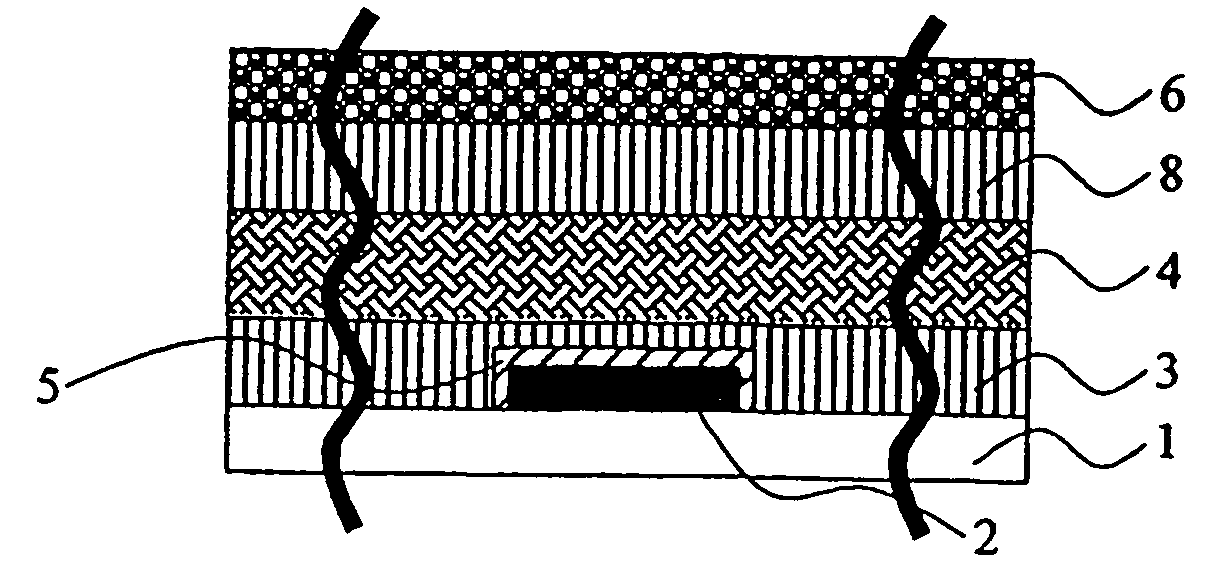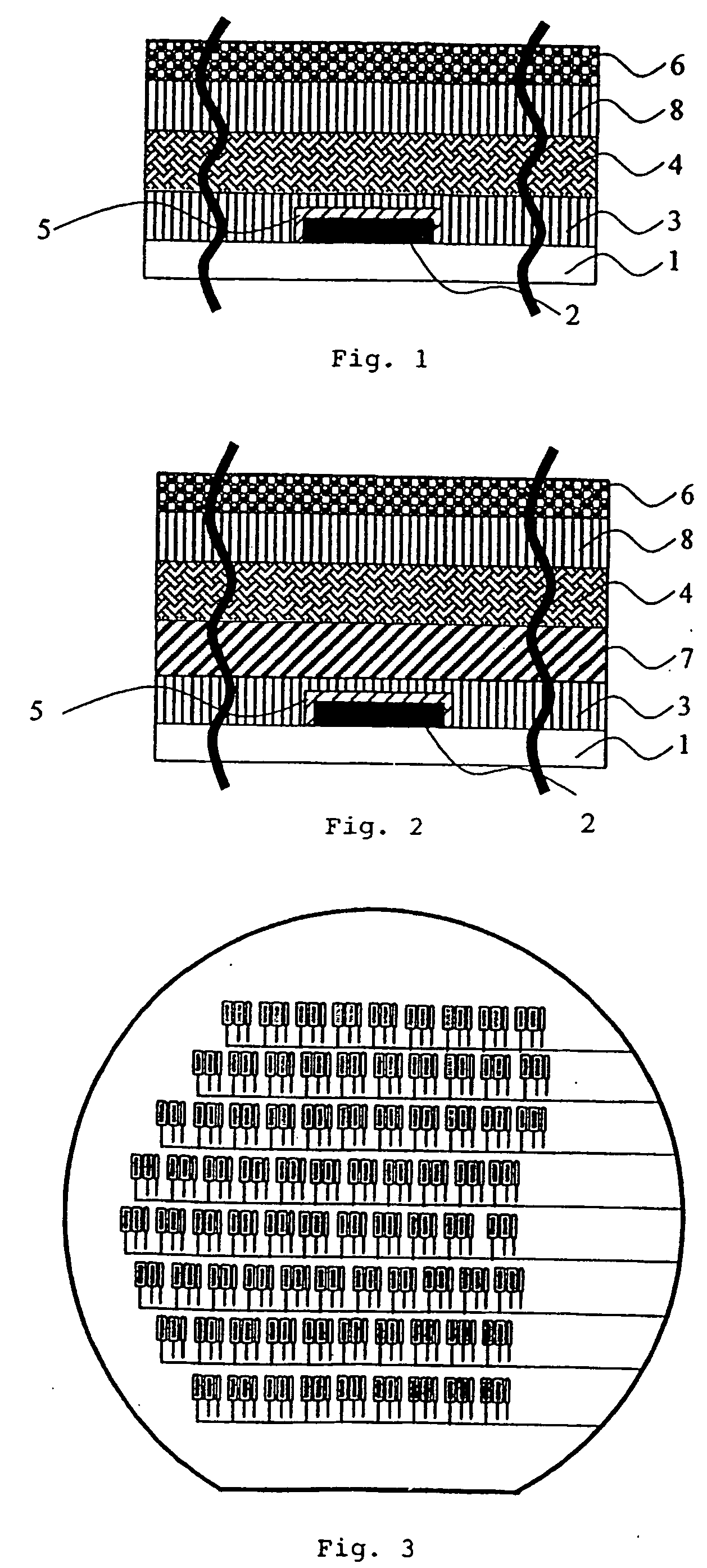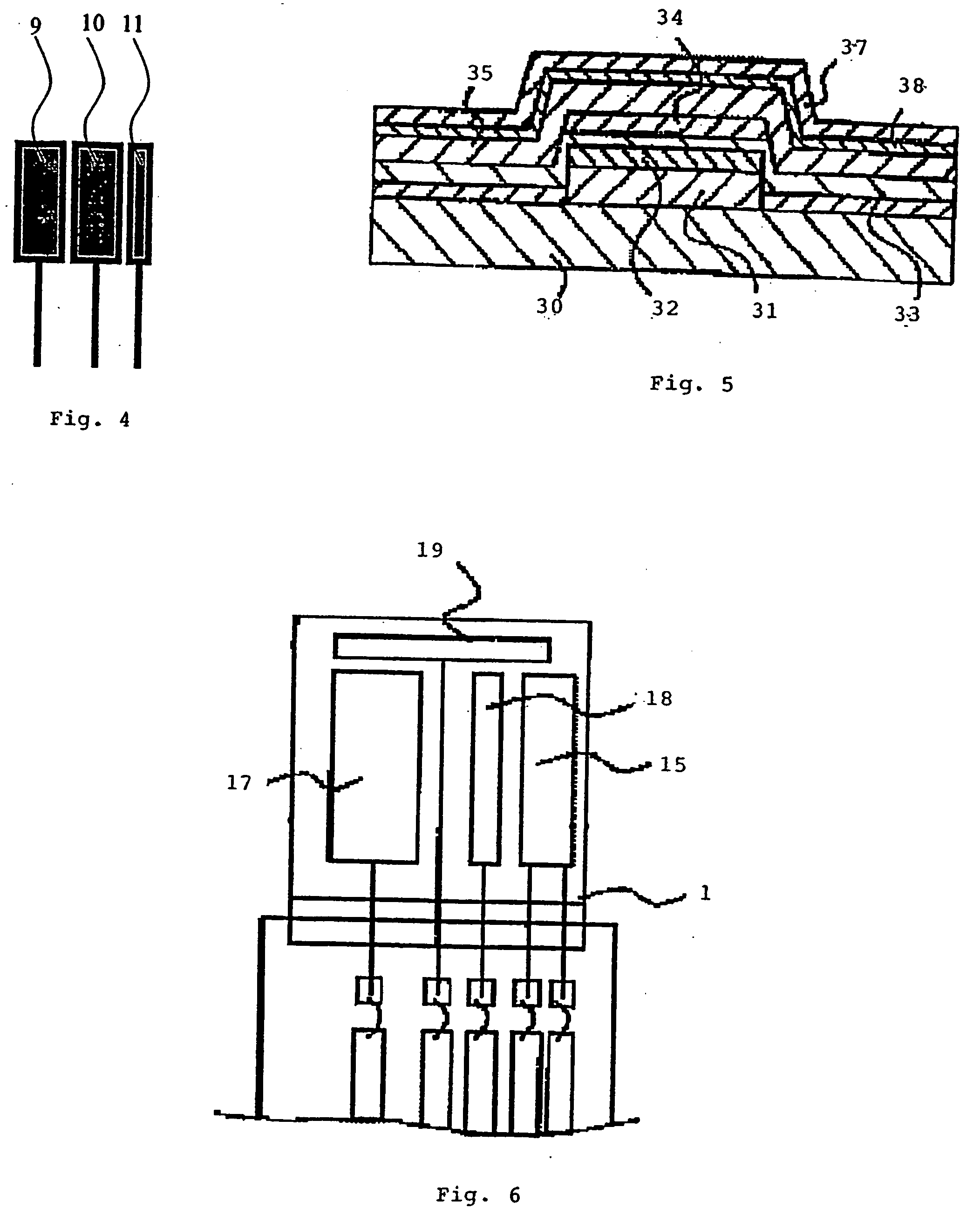Enzyme electrode and process for manufacturing the same
a technology of enzyme electrodes and electrodes, applied in the direction of liquid/fluent solid measurement, material electrochemical variables, instruments, etc., can solve the problems of failure to fully deform in response to swelling, limit the concentration of substrates, and tend to the permeation-limiting layer, so as to improve the adhesiveness of the permeation-limiting layer, improve the adhesion, and improve the effect of yield
- Summary
- Abstract
- Description
- Claims
- Application Information
AI Technical Summary
Benefits of technology
Problems solved by technology
Method used
Image
Examples
example 1
[0173] As shown in FIG. 3, on a 4-inch quartz wafer 12 (thickness: 0.515 mm; Nippon Electric Glass Co., Ltd.) were formed 82 sets of electrode chip, each set of which had the configuration shown in FIG. 4 and comprised a working electrode 9 (area: 5 mm.sup.2), a counter electrode 10 (area: 5 mm.sup.2) made of platinum, and a reference electrode 11 (area: 1 mm.sup.2) made of silver / silver chloride. When cutting into the individual sets, the size of each electrode chip is 10 mm.times.6 mm. Then, the chip was immersed in a 6M solution of urea containing 150 mM sodium chloride, and 0.7 V was applied to the working electrode 9 in relation to the reference electrode 11 for 10 min. In practice, all the working electrodes 9 were interconnected as shown in FIG. 3 and connected to the periphery. Thus, the periphery and the reference electrode 11 were connected to an electrochemical measuring apparatus, and the above potential was applied. Thus, an urea layer as an electrode protective layer 2...
example 2
[0179] As shown in FIG. 3, on a 4-inch quartz wafer 12 (thickness: 0.515 mm; Nippon Electric Glass Co., Ltd.) were formed 82 sets of electrode chip, each set of which had the configuration shown in FIG. 4 and comprised a working electrode 9 (area: 5 mm.sup.2), a counter electrode 10 (area: 5 mm.sup.2) made of platinum and a reference electrode 11 (area: 1 mm.sup.2) made of silver / silver chloride. When cutting into the individual sets, the size of each electrode chip is 10 mm.times.6 mm. Then, the chip was immersed in a 6M solution of urea containing 150 mM sodium chloride, and 0.7 V was applied to the working electrode 9 in relation to the reference electrode 11 for 10 min. In practice, all the working electrodes 9 were interconnected as shown in FIG. 3 and connected to the periphery. Thus, the periphery and the reference electrode 11 were connected to an electrochemical measuring apparatus, and the above potential was applied. Thus, an urea layer as an electrode protective layer 2 ...
example 3
[0185] As shown in FIG. 3, on a 4-inch quartz wafer 12 (thickness: 0.515 mm; Nippon Electric Glass Co., Ltd.) were formed 82 sets of electrode chip, each set of which had the configuration shown in FIG. 4 and comprised a working electrode 9 (area: 5 mm.sup.2), a counter electrode 10 (area: 5 mm.sup.2) made of platinum and a reference electrode 11 (area: 1 mm.sup.2) made of silver / silver chloride. When cutting into the individual sets, the size of each electrode chip is 10 mm.times.6 mm. Then, the chip was immersed in a 6M solution of urea containing 150 mM sodium chloride, and 0.7 V was applied to the working electrode 9 in relation to the reference electrode 11 for 10 min. In practice, all the working electrodes 9 were interconnected as shown in FIG. 3 and connected to the periphery. Thus, the periphery and the reference electrode 11 were connected to an electrochemical measuring apparatus, and the above potential was applied. Thus, an urea layer as an electrode protective layer 2 ...
PUM
| Property | Measurement | Unit |
|---|---|---|
| thickness | aaaaa | aaaaa |
| thickness | aaaaa | aaaaa |
| temperature | aaaaa | aaaaa |
Abstract
Description
Claims
Application Information
 Login to View More
Login to View More - R&D
- Intellectual Property
- Life Sciences
- Materials
- Tech Scout
- Unparalleled Data Quality
- Higher Quality Content
- 60% Fewer Hallucinations
Browse by: Latest US Patents, China's latest patents, Technical Efficacy Thesaurus, Application Domain, Technology Topic, Popular Technical Reports.
© 2025 PatSnap. All rights reserved.Legal|Privacy policy|Modern Slavery Act Transparency Statement|Sitemap|About US| Contact US: help@patsnap.com



